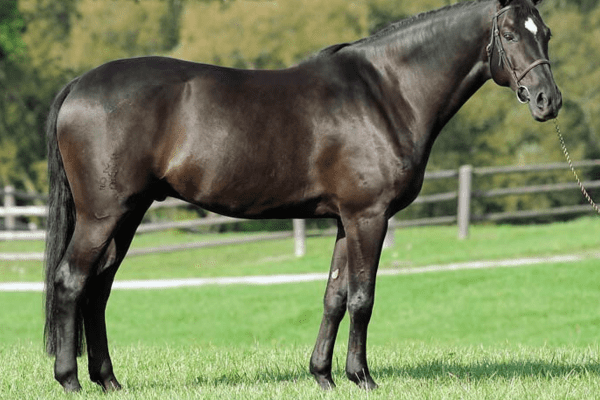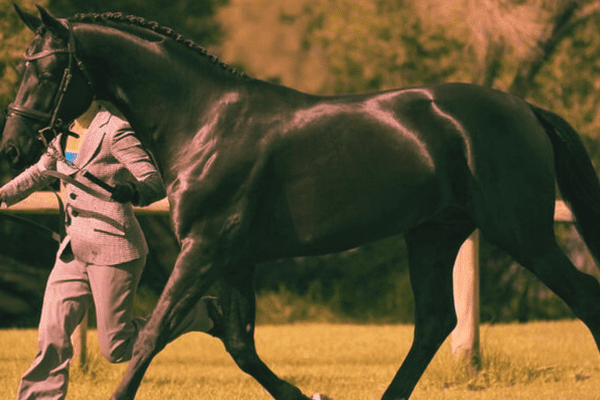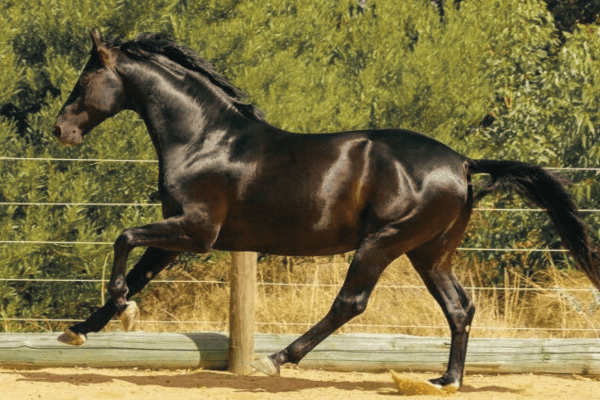The Australian Warmblood, an elegant and versatile breed of horse, is specifically bred for excellence in equestrian sports. Known for its adaptability and prowess, this breed shines in disciplines like dressage and show jumping. It holds a prominent place in field events across Australia, embodying a blend of agility, strength, and competitive spirit.
History:
The Australian Warmblood horse presents a unique chapter in equine history, distinct from its European ancestors in both its development and purpose.
European Origins and Evolution:
Story begins in Europe, where warmblood horses were originally bred for specific roles such as cavalry mounts and light draught work.
Breeding horses for specific roles often involved selective crossbreeding under the supervision of European nobility and legislators – specifically Germany. The purpose was to preserve specific bloodlines while meeting rigorous demands imposed upon horses used for these roles.
Focus Shifting to Australia:
Australia took a different approach when breeding Warmblood horses; its primary aim wasn’t to preserve European bloodlines but instead develop versatile sport horses of classic breed.
This led to the infusion of different warmblood breeds, producing horses not limited by the constraints of maintaining lineage purity but instead focused on versatility and performance.
Australian Warmblood Horse Association (AWHA) was formed.
The Australian Warmblood Horse Association was formed in the early 1970s, marking an important step in its evolution.
This organization played an instrumental part in shaping the Australian Warmblood’s future. Unlike its European counterparts, however, AWHA did not impose strict conformation trait restrictions initially.
Adopt Breeding Standards:
By 1985, the American White Horse Association made an important decision: adopt uniform breeding standards across its membership.
These guidelines were drawn from traditional European practices but tailored specifically for Australian conditions.
This change helped formalize the breed’s characteristics, assuring consistent quality while upholding its adaptability and versatility – features known to define Australian Warmblood horses.
Conclusion:
Today, Australian Warmblood horses represent successful international breeding practices that meld the best aspects of European heritage with Australian innovation.
This represents an ideal compromise between adhering to traditional breeding principles and meeting the variety and adaptability requirements for modern equestrian sports.
This narrative showcases the Australian Warmblood not just as a breed but as a symbol of cross-continental collaboration and an adaptable breeding philosophy designed to meet the changing demands of equestrian sports.
Breeding and Characteristics:
Australian Warmblood horses are carefully bred to achieve an ideal combination of conformation, movement and temperament.
Breeders often include lines from well-known European breeds such as German Hanoverian, Dutch Warmblood and Danish Warmblood to enhance these traits in the Australian Warmblood horse, typically standing 16-17 hands with strong yet refined builds suitable for multiple equestrian disciplines.


Temperament and Trainability:
One of the hallmarks of an Australian Warmblood’s popularity is their exceptional temperament. These horses are well known for their intelligence, willingness to learn, and cooperative nature – qualities which make them popular with riders of all skill levels.
Their trainable nature and responsiveness also makes them perfect for dressage, show jumping and eventing disciplines.
Performance in Sports:
Australian Warmbloods have made an indelible mark in international equestrian sport, particularly dressage and show jumping. Their athleticism combined with powerful and graceful movement helps them excel at these rigorous disciplines.
Furthermore, Australian Warmbloods are becoming increasingly popular as eventing competitors use them for stamina and agility challenges.
Health and Longevity:
This breed is also celebrated for its robust health and longevity. Breeders place great importance on selecting horses with both athletic ability and genetic soundness – an approach which has led to the breeding of horses known for being resistant to common health problems that plague horses.

Australian Warmblood in Equestrian Community:
Australian Warmblood horses have gained increasing interest from enthusiasts and breeders, supported by organizations like the Australian Warmblood Horse Association.
These organizations work tirelessly to promote this incredible breed while upholding breeding standards, hosting events to showcase its talents, and provide education about this fantastic animal.

